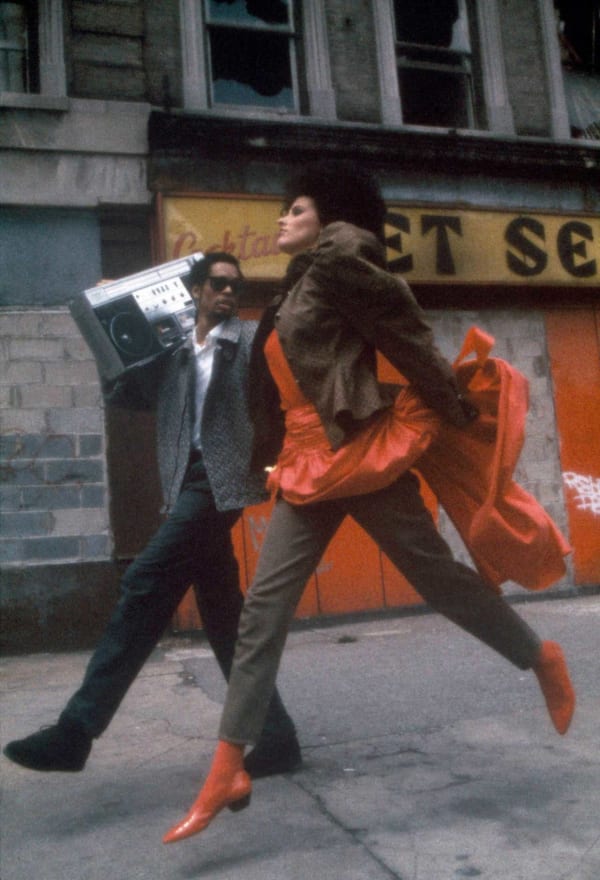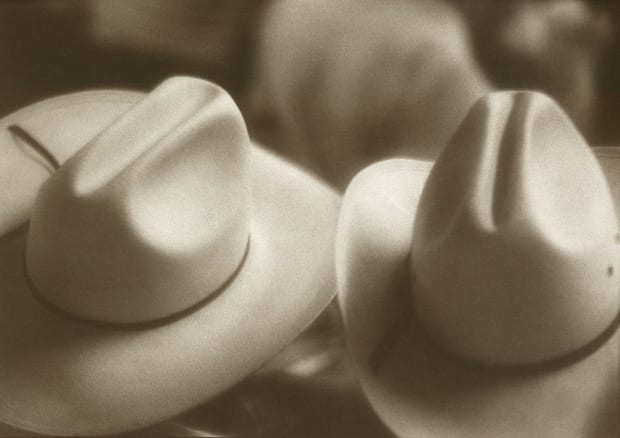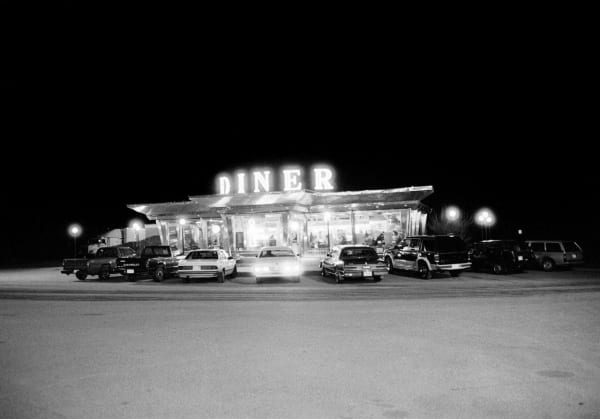-
Echo Fine Arts is proud to welcome Robert Farber. With a career spanning over 50 years and over half-a-million copies of his books sold, Farber's painterly photographic style has influenced generations of photographers. His impressionistic artworks capture the essence of composition in every genre, including nude, still life, landscape and architecture.
-
Register for the full Studio Tour here (available 24/7, or schedule your own watch time) : https://www.farberstudio.com/studio-tour
1) Enter your email and schedule a time to watch. You will receive a confirmation email with an immediate watch link if you prefer to watch right away.
2) Enjoy the Tour!
-
" I guess the best way to describe an image that is typically me, is an image that reflects my mood, my feelings at that time.
What I look for in an image especially when I photograph a still life, is to find a composition that exists only through my own point of view."
Robert Farber
-

-
Farber’s work with nudes in fine art as well as in the commercial realm is known and respected. He has lectured for Ogilvy & Mather on the “Nude in Advertising.” ASMP requested to use Farber’s nudes as an examples of the artistic application in support of the National Endowment of Arts, after its backing of the controversial Mapplethorpe/Serrano exhibit. His book, “Farber Nudes,” was also included the Jacqueline Kennedy Onassis estate collection.
Farber’s fine-art photographs have been published in virtually every form. Farber has exhibited in galleries and museums world-wide. He’s lectured at the Smithsonian Institute, The George Eastman House, as well as Universities and professional groups throughout the United States, Japan, Australia and Europe. Aside from his fine art photography, Robert Farber’s work encompasses major campaigns for fashion, beauty and advertising, as well as film directing for TV and Film. Robert has recently been approached for a film documenting his life as a photographer which is to be produced for PBS in the USA.
-
An Early Passion for Painting
late 60s - 70s -
 Robert Farber, Alone on a Hill, 1975
Robert Farber, Alone on a Hill, 1975 -

Robert Farber, Two On A Rock, 1979
-
Source of Inspiration
The Gleaners by Léon-Augustin L'Hermitte, Greek and Roman representations of Venus Anadiomene, the pathos of British pre-raphaelites, the vibrating nature of German Romanticism, etc. Robert Farber's photographs combine with mastery various influences drawn from the history of painting from the last three centuries into one single masterpiece. -
Farber Nude
1974-2006 -
In parallel to its growing commercial career in the fashion industry, Farber's first book "Images of Woman", was published in 1976. Already, Farber had crafted his own distinguishable style: the female body appears in its entirety or as a motif, bathed in a sensual and natural light in interiors or impressionistic landscapes. The book caught the attention of art directors and gallerists alike, hence leading to new commercial assignments and fine art exhibitions. His talent for female nudes did not go unnoticed by Playboy and Penthouse, who commissionned him to create more erotic photographs, which he chose to publish under an alias.
-
 Robert Farber, Natural Beauty Cover, 1994
Robert Farber, Natural Beauty Cover, 1994 -
-
 Robert Farber, Nude With Bag Over Head, Milan, Italy, 1989
Robert Farber, Nude With Bag Over Head, Milan, Italy, 1989 -
 Robert Farber, Seeing Montana, 1992
Robert Farber, Seeing Montana, 1992 -
A Fashion Photographer
-
Following his nudes books, Robert Farber gained more popularity in the advertising and fashion industry. His photographs appears on the covers of major publications such as QG, Vogue, Esquire, Elle, Viva, Cosmopolitan or Vanity Fair to name a few. He signed campaigns for Revlon, Ponds Cream, Caress Soap, Saks Fifth Avenue, Christian Dior, L'Oréal, Paramount Pictures, Bloomingdales and many more . Owned by conservative American companies, these advertising assignments validated the photographer's nude style while giving it legitimacy in the eye of the establishment. Additionally, his book "Farber Nudes" was listed in the Jacqueline Kennedy Onassis estate auction. Farber was even asked to help with the National Endowment of the Arts as examples of good taste in nude photography.
-
-
 Robert Farber, Hollywood, 1982
Robert Farber, Hollywood, 1982 -
 Robert Farber, Gia on a Lifeguard Stand, 1979
Robert Farber, Gia on a Lifeguard Stand, 1979 -
 Robert Farber, Empire Diner, New York, 1979
Robert Farber, Empire Diner, New York, 1979 -
Americana
A Journey of Moods -
Robert Farber started his Americana series and subsequently published his book "American Mood" following travels throughout the West for advertising campaigns for Wrangler Jeans.
-
" Photographic collections of America and Americana have been in widespread publication for decades. Most take a photojournalistic perspective, documenting life as it happens, at its most real. Variations on the theme exist, some going so far as to present a simultaneous aspect to its documentation. [... ] Robert Farber has spent his professional career as a very different kind of photographic scribe. Rather than recount in images, Farber paints in dreams. Be it the dying sun of a beachfront horizon or the elegant curve of a human form, the mood is frozen, and the emotion is made to endure. What makes these captured moments all the more captivating is that they are not dreams but, in fact, reality. We just didn’t see it. Robert Farber did.”
- Lee Sheridan
Foreword of “American Moods”, Merrell publishing, 2004
-
 Robert Farber, Winding Road, Prey, Montana, 1998
Robert Farber, Winding Road, Prey, Montana, 1998 -

Robert Farber, Two Cowboys, Southwest Texas, 1987
-
-
 Robert Farber, 48 Stars Flag, Maine, 2007
Robert Farber, 48 Stars Flag, Maine, 2007 -
By the Sea
1982 - 1998 -
His nude books also led him to other territories. Following the publication of his fifth book Farber Nudes (1983), Farber received a call from former first lady and Doubleday senior editor Jacqueline Kennedy Onassis. Farber, who had recently spent time on the French Riviera, showed her his recent photographs, which included many seaside images. Onassis enthusiastically reacted: “Let’s call the book ‘By The Sea’ and add images from various parts of the world”.
Farber's artworks are enhanced by the handwritten thoughts and comments of sixty people whose lives have been touched in some way by the sea. From Anne Bancroft and Whoopi Goldberg to a lifeguard at Malibu, from Erte and Yoko Ono to an innkeeper in Mexico, their eloquence transforms this book. From a collection of exceptional photographs, il becomes an homage to one of the most enduring relationships in nature: the bond that unites man to the sea.
First published in 1987, then revised for paperback in 1994, ‘’By The Sea’’ went on to win the Art Director’s Award for Color Photography.
-
-
 Robert Farber, Red Boat, Portofino, Italy, 1984
Robert Farber, Red Boat, Portofino, Italy, 1984 -
" Farber's coastal landscape is sensual, simply framed and perceived in terms of painting."
"One of the artist’s adventures is ascribed to coastal scenes of sea and ocean (By the Sea, 1982-1998). Here, in comparison with the previously mentioned works, colour photography is fully present. Farber’s coastal landscape is sensual, simply framed and perceived in terms of painting. The artist’s traces of sojourns on the coasts conceptually signify the connection of different areas of the world by seas and oceans, for all comes from and returns to the sea, it is the symbol of the dynamics of life, of the world and the human soul.
In Portofino, he takes a picture of the bow of a red boat. Its dark reflection on the surface of the sea takes up just as much space as the central motif, which goes on beyond the border of the frame. The azure of the sea and the white reflections of the clouds on it seem to belong to the language of abstract painting.
He experiences the shores of California in an Impressionist tone of warm brown where the white Pacific slides down the beach. In the foreground, there is a lone sunny branch, while a dark brown rock or hill dominates the background, beyond which in the distance the horizon is glimpsed. Every thing connected with the land is brown (not even the sky is blue), and the shades of that colour reveal the humbleness of the landscape in its asceticism as against the white of the ocean that rolls between absence and presence."
- Petra Golusic
-
 Robert Farber, Evening Sunset Reflection and an Old Boat, France, 1982
Robert Farber, Evening Sunset Reflection and an Old Boat, France, 1982
ROBERT FARBER, 11 September - 6 November 2023
Join our mailing list
* denotes required fields
We will process the personal data you have supplied in accordance with our privacy policy (available on request). You can unsubscribe or change your preferences at any time by clicking the link in our emails.





























